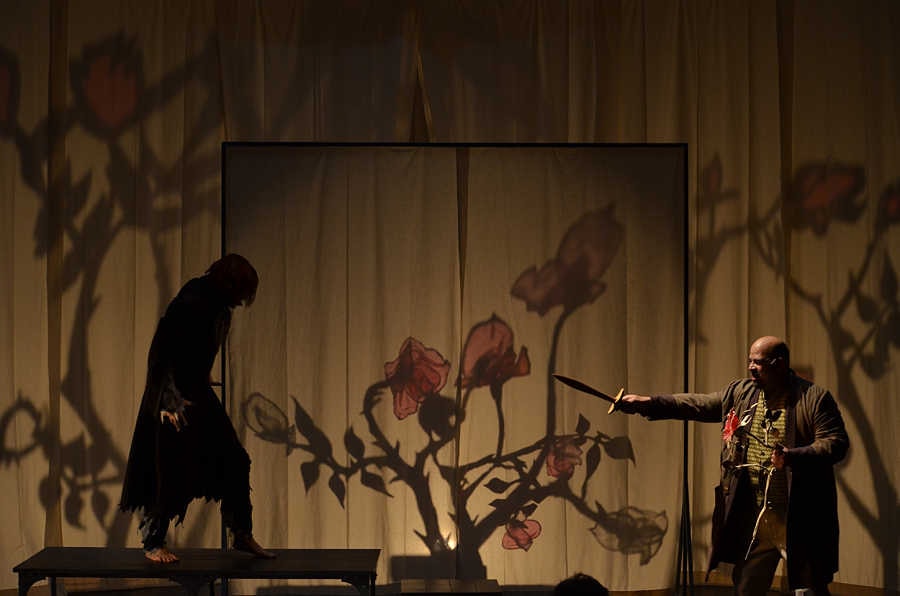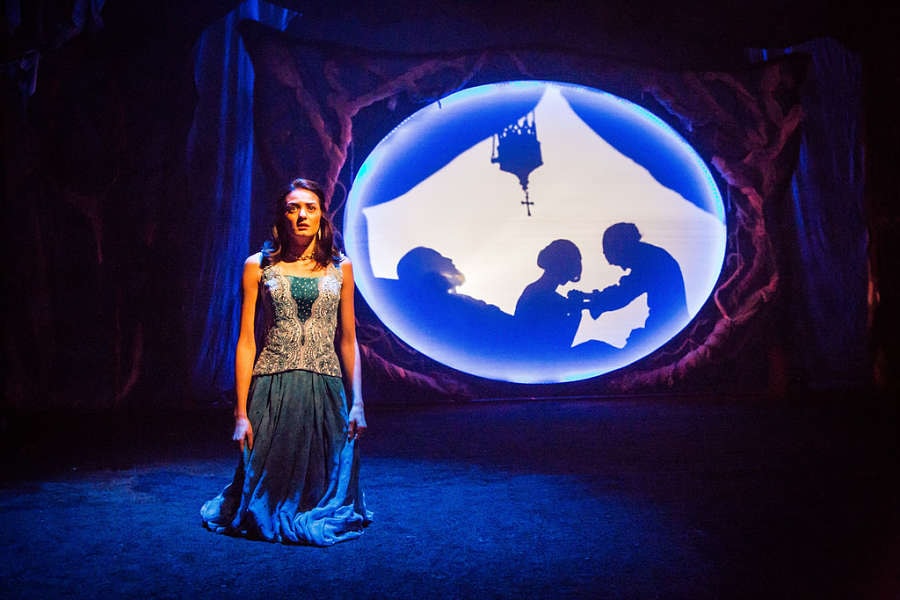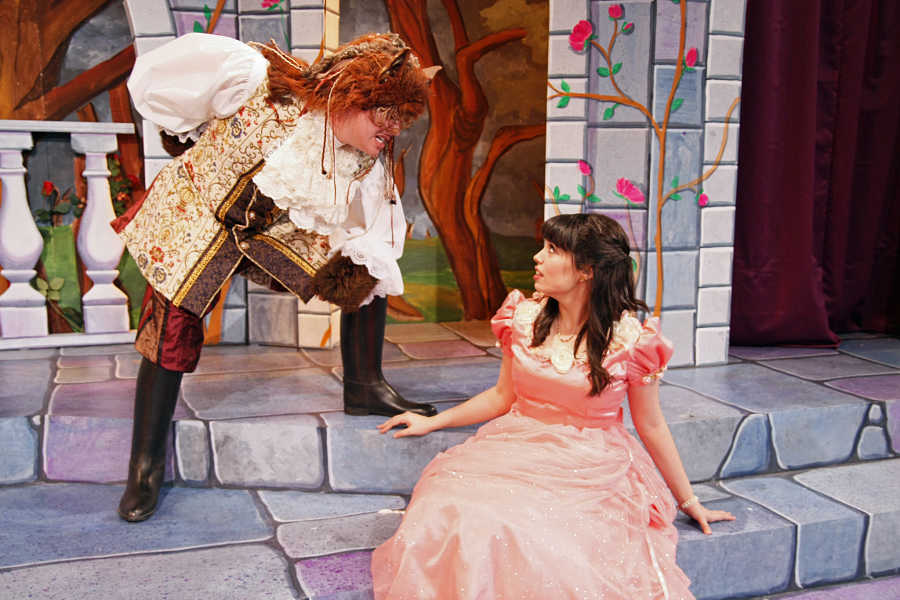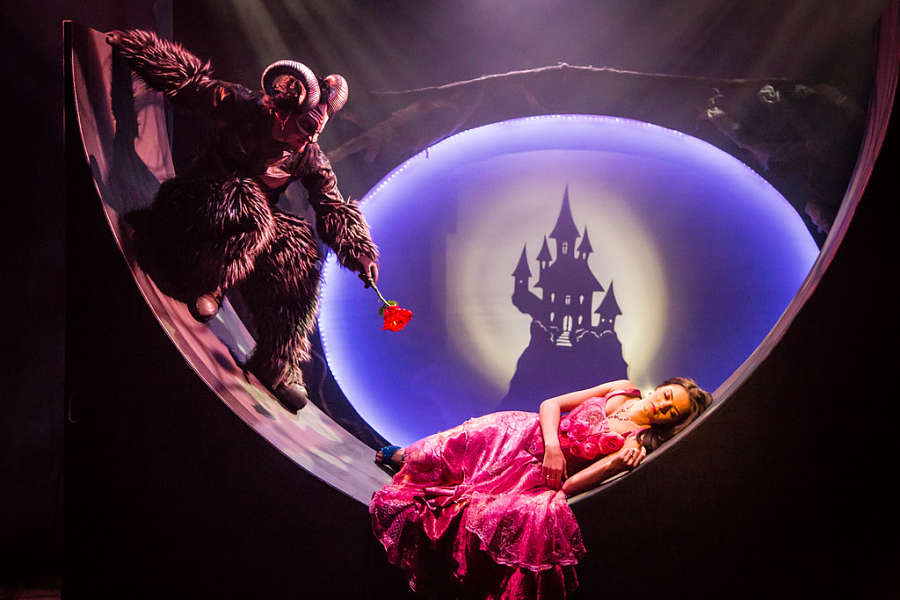To the generation who grew up with Disney movies in the ’90s, the studio’s 1991 film Beauty and the Beast is a classic. It is also possibly the only version of the fairy tale they know of. The story of a woman who finds herself imprisoned in a monster’s castle was actually written by Jeanne-Marie Leprince de Beaumont and published in 1756.
The Disney version may often take precedence over other versions, but stage adaptations going on this month at Philadelphia’s Arden Theatre Company, Crystal City, Va.’s Synetic Theater and Plano, Tex.’s Theatre Britain, are making audiences forget about singing silverware and furniture.
Each theatre has interpreted the fairy tale in a different way—by making the production completely wordless, sung as a British panto or using shadow play. But don’t take our word for it; let the creator of each production tell you below.

Arden Theatre
Whit MacLaughlin, Arden Theatre: We approach shows trying to find a unique point of view. Charles Way [who wrote this version] has done a lot of adaptation work, and he is very good about coaxing more interesting themes out of the story.What this show is really about is courage; we find our courage when life presents us with a task. This adaptation presents a heroine who ultimately overcomes her fears.
We did Beauty and the Beast as a shadow production. Literally, we designed a large sheet for the show. This was the scenic idea, and everything else is in shadow. The sheet was a complete blank slate where everything is projected. We harken back to traditional European styles of shadow-making. Shadow-making is a lost art form, and it’s a beautiful way to evoke the subconscious. And we have no backstage, so everything is visible to the audience. My thought was to show it all, which gives the audience access to how images are created in their heads.

Synetic Theatre
Ben Cunis, Synetic Theater: We started looking at all of the versions we could—the original fairy tale, and Jean Cocteau’s film La Belle et La Bête, which we paid a little homage to. We typically do new adaptations of classics and find a physical, wordless version for it. We always try to find the bones of a story, and here the idea was about redemption and transformation.
In a wordless production, the visuals become even more important. Aesthetically, you have to really be intricate and visual to tell these scenes. We do this through three concepts: shadow puppets, puppet bodies and physical bodies.
We wanted to do something that brought up an Old World darkness while also using the fairy tale. With the shadow imagery, any minute movement can change your image completely. But with careful choreography and staging, you can have an actress enter the castle almost magically. It is all about the interplay, and giving the audience something they can imagine.

(Photo by Steve Freedman)
Theatre Britain
Sue Birch, Theatre Britain: Theatre Britain produces a panto at this time each year, and Jackie Mellor-Guin, our playwright, chooses a fairy tale or traditional story to adapt. Panto has stock characters—like the Dame, the Principal Boy, the villain and the comic relief—and stock situations like the ghost scene, the black light scene, the singalong. It does change the story somewhat, but only in the periphery. The core of the tale remains the same.
Darryl Clement, Theatre Britain: I looked at a lot of Gothic garden architecture and follies. Because lots of the scenes took place in either the castle or the garden, I wanted to create an environment that encompassed both. Also, because the rose is the impetus for moving the action, I wanted to fill the space with climbing roses. Since the black light scene happens right before the picking of the rose, we wanted to foreshadow that by having only the roses lit in the black light scene.
Beauty and the Beast, in a new version by Charles Way, at Arden Theatre opened on Nov. 26 and will run through Feb. 1. It is directed by Whit Maclaughlin, with scenic design by David P. Gordon, costumes by Richard St. Clair, lighting by Brian Sidney Bembridge, sound by Rob Kaplowitz and shadow/object design by Sebastienne Mundheim of the White Box Theatre.
Synetic Theater’s Beauty and the Beast, adapted by Ben and Peter Cunis, opened on Dec. 3 and will run through Jan. 11. Ben Cunis directs, Paata Tsikurishivili steps in as producer, and choreography was done by Irina Tsikurishivili.
Beauty and the Beast at Theatre Britain opened on Nov. 29 and runs through Dec. 28. It was written by Jackie Mellor-Guin, directed by Sue Birch, features set design by Darryl P. Clement, lighting design by Jason Lynch, costume design by Tory Padden, wigs and hair by Don Hall, choreography by Terri Bruno and original music by Aaron Frykland.


